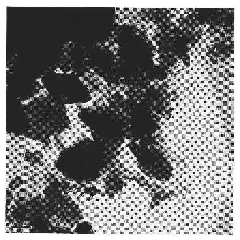Method for preparing graphene-doped anode material for lithium-ion batteries
A lithium-ion battery and positive electrode material technology, applied in the nanometer field, can solve the problems of high cost of carbon nanotube preparation, unfavorable development and cost performance, etc., and achieve the effect of improving electronic conductivity, low cost, and high capacity
- Summary
- Abstract
- Description
- Claims
- Application Information
AI Technical Summary
Problems solved by technology
Method used
Image
Examples
preparation example Construction
[0025]The preparation method of the positive electrode material of this kind of lithium ion battery, wherein the main component of the positive electrode material is lithium iron phosphate nanoparticles, and its preparation method steps mainly include: I, prepare graphene, graphene oxide and intercalated graphene; II, combine two Valence or trivalent iron salt, reducing agent, lithium salt and phosphoric acid are mixed in the dispersion liquid as raw materials, and the method of hydrothermal, co-precipitation, or sol-gel is used to prepare lithium iron phosphate nanoparticles; III, graphene, The synthesis process of graphene oxide and intercalated graphene compositely mixed with lithium iron phosphate nanoparticles, or directly mixing lithium iron phosphate nanoparticles with graphene, graphene oxide and intercalated graphene, drying, filtering, washing, and then Drying and annealing treatment, synthesis of graphene oxide, graphene bridge or coated lithium iron phosphate nanopa...
Embodiment 1
[0034] Graphite powder is oxidized by concentrated sulfuric acid, potassium permanganate and phosphorus pentoxide, washed with deionized water to neutrality, then deeply oxidized by concentrated sulfuric acid and potassium permanganate, and the reaction is terminated by adding a large amount of deionized water and a certain amount of hydrogen peroxide , washed again to neutral with deionized water. Obtain graphite oxide. Graphite oxide is ultrasonically dispersed to obtain a thin layer of graphene oxide.
[0035] Hydrothermal synthesis of graphene-coated LiFePO 4 The nanoparticle method is as follows, the initial raw material is LiOH·H 2 O, FeSO 4 ·7H 2 O, H 3 PO 4 , graphite oxide aqueous solution and L-(+)-ascorbic acid (vitamin C) as reducing agents. Accurately weigh 630mg of LiOH·H 2 O in a beaker, add 5mL deionized water, stir until completely dissolved. Then measure 0.34mL, 85% H 3 PO 4 In the solution, add 10mL graphite oxide aqueous solution (make the carbon...
Embodiment 2
[0038] Under the protection of inert gas, micron graphite powder and metal halide FeCl 3 Mix well, seal it into a quartz glass container, put it into a high-temperature furnace after sealing, and heat it to 360°C to carry out the metal halide intercalation reaction. The reaction time is more than 72 hours. After taking out, the product is ground and cleaned to form intercalated graphite powder.
[0039] Hydrothermal synthesis of graphene-coated LiFePO 4 The nanoparticle method is as follows, the initial raw material is LiOH·H 2 O, aqueous solution containing intercalated graphite powder and L-(+)-ascorbic acid (vitamin C) as reducing agent. Accurately weigh 630mg of LiOH·H 2 O in a beaker, add 5mL deionized water, stir until completely dissolved. Then measure 0.34mL, 85% H 3 PO 4 In the solution, add 10 mL of aqueous solution mixed with intercalated graphite powder, successively weigh 100 mg of L-(+)-ascorbic acid and stir in the mixed solution so that Li:Fe:P=3:1:1 (mo...
PUM
| Property | Measurement | Unit |
|---|---|---|
| size | aaaaa | aaaaa |
| size | aaaaa | aaaaa |
Abstract
Description
Claims
Application Information
 Login to View More
Login to View More - R&D
- Intellectual Property
- Life Sciences
- Materials
- Tech Scout
- Unparalleled Data Quality
- Higher Quality Content
- 60% Fewer Hallucinations
Browse by: Latest US Patents, China's latest patents, Technical Efficacy Thesaurus, Application Domain, Technology Topic, Popular Technical Reports.
© 2025 PatSnap. All rights reserved.Legal|Privacy policy|Modern Slavery Act Transparency Statement|Sitemap|About US| Contact US: help@patsnap.com



